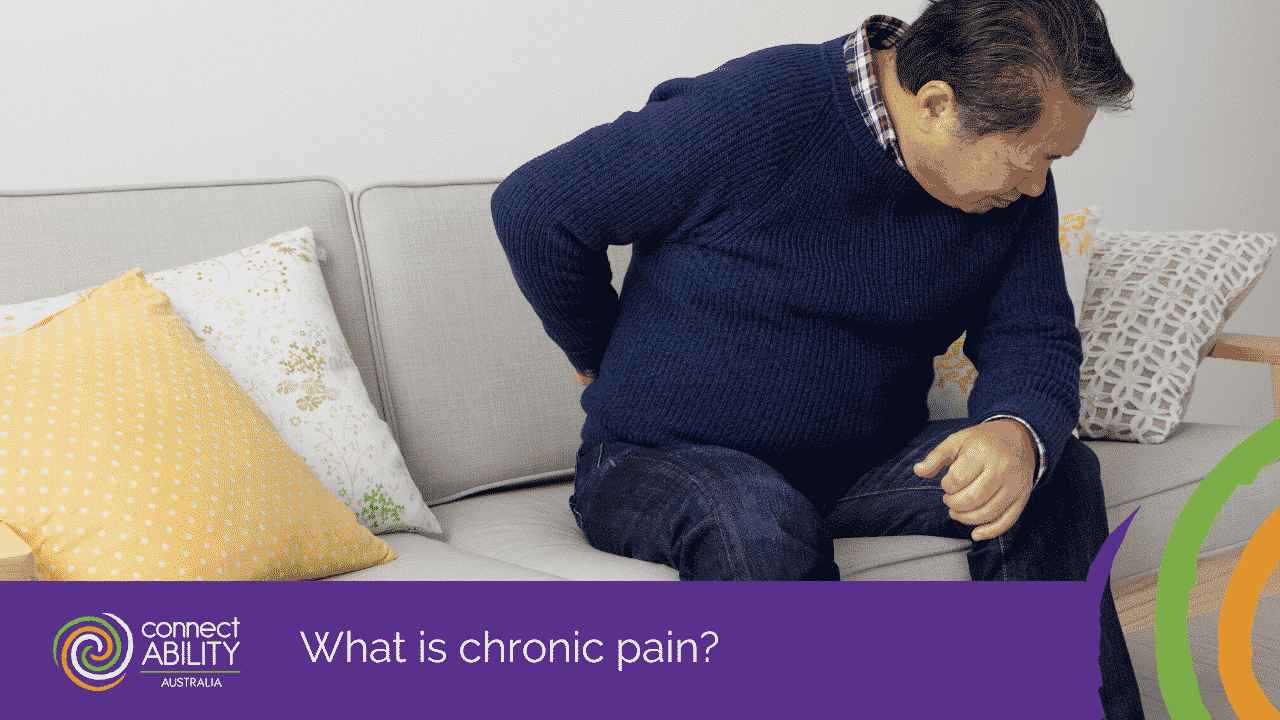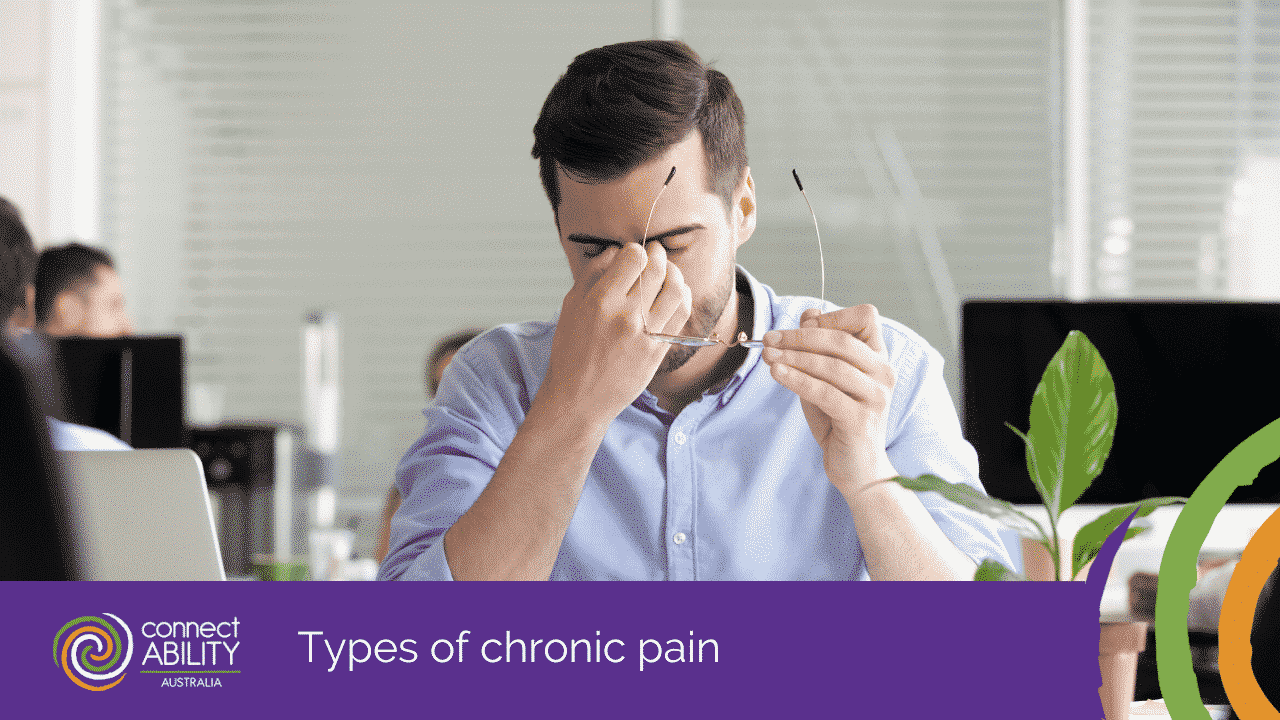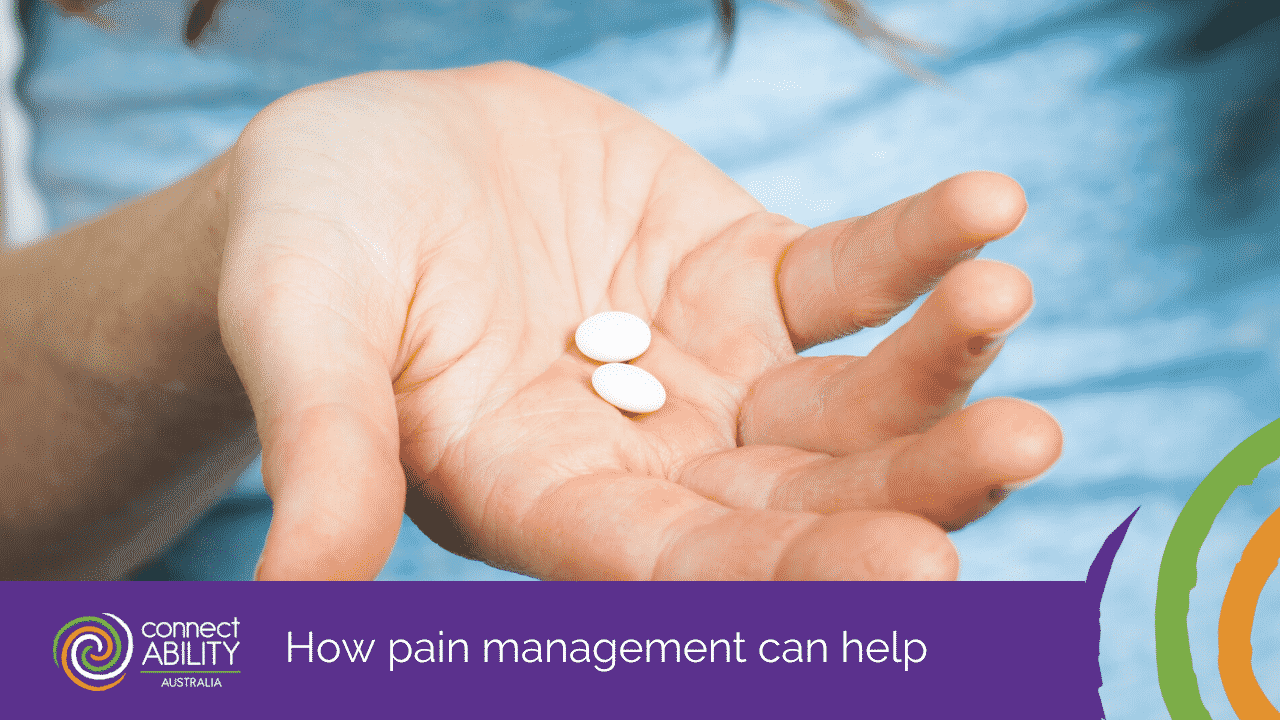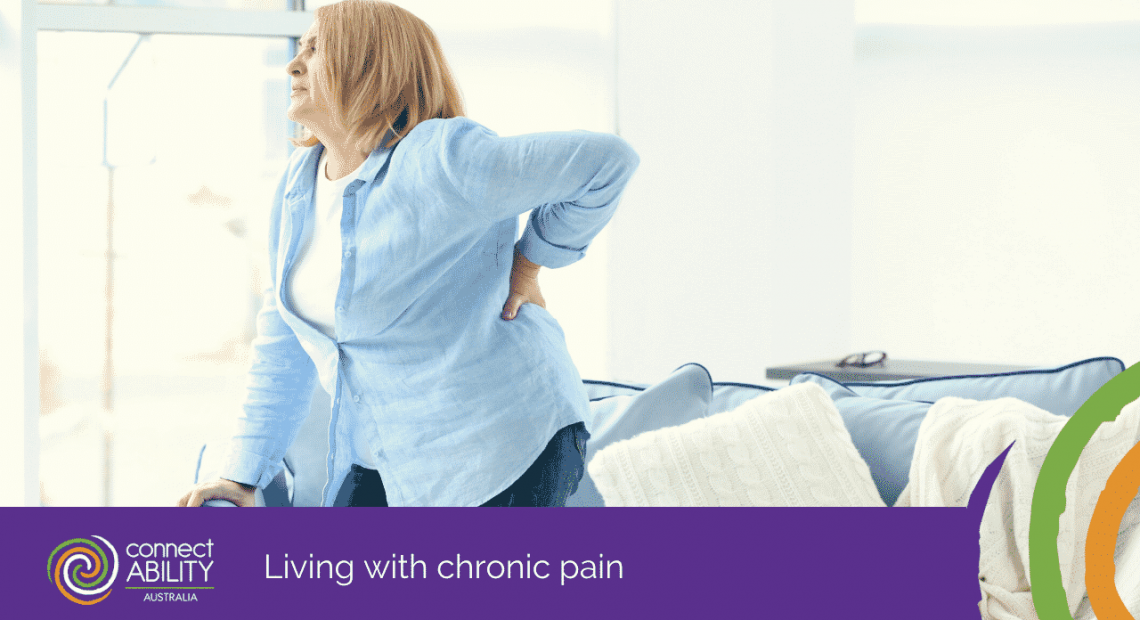3.24 million people in Australia suffer from chronic pain, which has a substantial impact on their quality of life and inhibits their ability to do daily activities, such as work or take care of their household. Many of those people suffering from chronic pain do not have their condition under control and do not know what resources are there for them to find the right treatment.
While a condition that causes chronic pain may not be life-threatening, being in pain is likely to cause considerable suffering and can have a negative impact on mental health. Of the 3.24 million people in Australia who experience chronic pain, 56% experience difficulty in completing tasks on a daily basis.
ConnectAbility has put together a guide to living with chronic pain and ways to live an enjoyable life in spite of your illness.

What is chronic pain?
Pain is generally considered to be chronic if it persists for longer than 12 weeks despite the use of medication or treatment.
While most people return to a normal state of wellbeing following an injury or operation some people experience pain for a longer period of time or the pain begins without any apparent cause; other times, chronic pain is the result of an injury, but the pain continues after the injury has healed.
Chronic pain also commonly affects people living with:
- rheumatoid arthritis
- osteoarthritis
- diabetes
- fibromyalgia
- cancer
- multiple sclerosis
- gallbladder disease

Types of chronic pain
Chronic pain comes in a number of different forms with the most common being musculoskeletal, neuropathic pain and chronic widespread pain.
Musculoskeletal: Musculoskeletal pain refers to pain in the bones, ligaments, joints, muscles, nerves and tendons. Chronic pain can affect one area of the body or it can cause pain throughout the body, which is common for those living with illnesses such as fibromyalgia.
Neuropathic pain: Neuropathic or nerve pain is a form of chronic pain that occurs as a result of nerves in the central nervous system becoming damaged or injured and is usually accompanied by a tissue injury. With neuropathic pain, damaged, dysfunctional or injured nerve fibres send wrong signals to other pain centres.
Widespread pain: Chronic widespread pain is characterised by long-lasting pain in multiple areas of the body and is commonly accompanied by other symptoms such as lack of ability to concentrate, fatigue and mental distress.

How pain management can help
There are many things that you can do to help improve your life quality while living with a condition that causes chronic pain. Small adjustments can make a big difference to the amount of pain and discomfort you are experiencing. This is called pain management.
To help manage chronic pain, it may be beneficial to:
Plan ahead for activities: It’s important to plan ahead when you are organising the activities that need to be done during the day. If you have mobility issues you may need to use a mobility aid while you are at the place you are visiting. You may also want to consider the form of transport you will use, if there is disability parking available and if you will be able to access the toilets.
Even if you will not be leaving the house, it is still a good idea to schedule your daily tasks. For example, if your pain is more severe in the evening time, you could prepare your evening meal in the morning.
Pace yourself: People living with chronic pain are at a greater risk of experiencing low energy than the general population. While energy levels may be unpredictable, they generally follow a daily pattern and tend to become worse as the day progresses.
To combat extreme fatigue, you should make a list of easy, moderate and challenging activities that you would like to achieve during the day and pace them so you can get the most out of your energy.
Use pain medicine: Although there is no single cure available for chronic pain, there are many ways to manage it. When used appropriately, pain medication can be very effective in controlling certain types of chronic pain that cannot be lessened by other treatments.
Exercise regularly: Exercising can be difficult for those living with chronic pain but it is important to keep the body healthy and can even help manage symptoms by releasing endorphins, which are the body’s natural painkillers.
Regular exercise has many know benefits for chronic pain sufferers including keeping your heart healthy, increasing endurance and aiding in weight loss.
Some of the most common exercise activities for those living with chronic pain include:
- Walking
- Aerobics
- Yoga
- Swimming
- Light weight lifting
- Cycling
Find a support network: It’s important to have someone to confide in when you are feeling low. If you feel that you cannot speak with family or friends, there are many non-profit organisations that promote well-being for people living with chronic pain and those who support them.
Here is a number of links to some support networks that you may benefit from:
- Musculoskeletal Australia Support Group
- GAIN Chronic Pelvic Pain Support Group
- Beyond Blue (Online forum)
- Young Women’s Arthritis Support Group (Facebook page)
- Australian Chronic Pain Sufferers (Facebook group)
- Chronic Pain Australia (Forum)

For Australians living with chronic pain
ConnectAbility aims to make a significant difference Australians living with chronic pain whether that is through access to community-based resources, aged care support, facilities, disability support and family counselling.
We can assist people with chronic pain conditions by offering in-home personal care and domestic assistance, shopping and meal preparation, assistance with medication management, social supports and respite care both in-home and in the community.
If you feel like you could benefit from our assistance, contact us either through our website or by calling our office directly.


